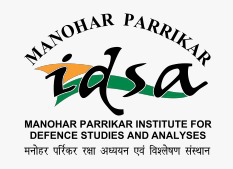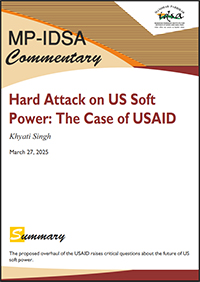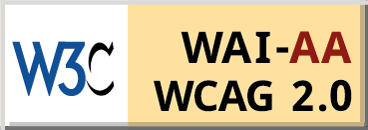Hard Attack on US Soft Power: The Case of USAID
- March 27, 2025 |
- IDSA Comments
The United States Agency for International Development (USAID) is set to become a thing of the past after President Donald Trump announced his intent to ‘get rid of it’.i Trump issued an executive order aimed at overhauling the US foreign aid system, citing misalignment with American interests and values. He asserted that the current foreign aid framework was inconsistent with US interests and called for a 90-day suspension of all new foreign development assistance obligations and disbursements. This pause is expected to allow for a comprehensive review of existing programmes to assess their efficiency and alignment with US foreign policy.
The reviews of foreign assistance programmes are being done under the guidance of the Secretary of State and the Director of the Office of Management and Budget (OMB). Within the 90-day period, decisions will be made regarding the continuation, modification, or termination of each programme based on the review findings. Assistance may resume before the 90 days if a programme is deemed worthy of continuation after review. The Secretary of State has the authority to waive the pause for specific programmes if necessary.ii
The USAID was established in 1961 to counter the influence of the USSR in developing nations. It merged various foreign aid programmes of the US. The agency primarily focused on promoting market economy in Southeast Asia, and forestall the spread of communism. The agency evolved under various influences and congressional pressure, and shifted from large-scale infrastructure projects, such as dam construction, to more localised and sustainable development efforts.iii The decade of late 1990s and early 2000s was marked by both challenges and opportunities for the agency. There were initiatives like President’s Emergency Plan for AIDS Relief (PEPFAR), with the aim to combat the epidemic of HIV/AIDS.
Since 2010, the major focus of the agency has been around health. USAID played an instrumental role in combating diseases like malaria and tuberculosis. USAID has also significantly invested in promoting democracy and civil society across the globe, through programmes focused on election monitoring and anti-corruption initiatives.iv Furthermore, USAID functioned as a significant vector for knowledge transfer and capacity-building through technical assistance and educational programming. The agency funded educational exchanges, university partnerships and professional training programmes.
In addition, humanitarian response to natural disasters and complex emergencies constituted a particularly powerful dimension of soft power. USAID’s Office of Foreign Disaster Assistance (OFDA) established significant logistics capabilities that enabled rapid American response to tsunamis, earthquakes and disease outbreaks, generating substantial reputational benefits.v The OFDA was merged with Food for Peace (FFP) programme in 2020 to form the Bureau for Humanitarian Assistance (BHA), aimed at streamlining and enhancing the US government’s response to humanitarian crises.
Implications
With missions in over 60 countries, employing 10,000 people, the organisation’s closure will derail many of these efforts. The call for USAID shut down is aligned with President Trump’s ‘America First’ approach, alleging that the spending is ‘totally unexplainable’. Trump’s close aide and tech billionaire Elon Musk has gone up to the extent of calling it a ‘criminal organisation’.vi
As per the government data, the US spending on international aid in 2023 stood at US$ 68 billion, which is about 0.6 per cent of the entire US government spending estimated at US$ 6.75 trillion.vii Following Trump’s announcement, a 90-day review pause has been done on all the disbursements. This resulted in sudden halt of all the ongoing humanitarian operations in states like Syria and Afghanistan.viii In Syria, the US has been the largest foreign aid provider, contributing over US$ 18 billion in humanitarian assistance since 2011, including US$ 1.2 billion in 2024. Recent funding has included US$ 76.8 million for refugee and conflict victim support, US$ 34.7 million for food and nutrition aid, and US$ 20.2 million for emergency food assistance.ix The freeze of aid has affected the Al-Hol displacement camp, which houses around 40,000 individuals, mostly women and children displaced from areas previously controlled by ISIS. Likewise, in Afghanistan, a major midwifery programme, which was one of the few remaining educational options for girls, has closed, leaving many without access to necessary healthcare and education.x
The withdrawal of USAID will create opportunities for competing powers to expand their spheres of influence. China’s increased involvement in regions previously supported by USAID could realign geopolitical alliances, diminish US influence, and alter the balance of power in favour of nations with differing governance models. China’s Belt and Road Initiative (BRI), launched in 2013, is a massive global infrastructure and economic development programme spanning Asia, Africa, Europe and Latin America. China’s investment in the health sector in Africa has been partially substituting the USAID.xi
Between 2000 and 2017, China invested approximately US$ 1.6 billion in 1,026 health projects across Africa, focusing on building health infrastructure, providing medical supplies and deploying medical teams.xii In recent years, China has pledged to invest an additional US$ 50 billion in various sectors, including health. The establishment of the African Centre for Disease Control in Ethiopia is a notable example of China’s involvement in the health sector on the continent.xiii
Albeit, there continue to be fundamental differences in funding models, priorities and long-term strategies. The US typically employs a model that emphasises humanitarian aid with accountability and transparency measures. USAID’s funding often comes with conditions aimed at promoting democratic governance and human rights. In contrast, China’s funding model is characterised by less conditionalities and a focus on infrastructure development. Chinese aid often includes loans and investments in physical infrastructure, such as hospitals and clinics, without the same emphasis on governance or human rights.
As for disaster response efforts of the USAID, the future of the BHA remains uncertain. The proposed merger with the State Department and the drastic cuts could lead to a redefinition of US foreign aid priorities, focusing more on national security interests rather than humanitarian needs. This shift may result in a less coordinated and effective response to global humanitarian crises.xiv Furthermore, any significant restructuring of USAID would likely require congressional approval, which adds another layer of complexity to the proposed changes. The agency was established by law, and its dissolution or merger would necessitate legislative action, which may face opposition from various stakeholders who recognise the importance of US humanitarian assistance.
Conclusion
The USAID has been subject to multifaceted criticisms throughout its institutional history. It is contended that the agency primarily operated as an extension of US foreign policy objectives rather than as a solely humanitarian or developmental organisation. Furthermore, USAID’s programmes often create dependency among recipient countries. This has been particularly evident in countries like Haiti, where decades of aid have not resulted in sustainable development or self-sufficiency. USAID’s democracy promotion initiatives have sparked debate over possible intrusion into sovereign political affairs.
Despite such criticisms, the organisation was a vital instrument in US soft power projection. The recent actions taken by the Trump administration to dismantle USAID, therefore, represent a significant shift in US foreign policy and its approach to international development. The proposed overhaul of the agency, framed as a necessary realignment with American interests, raises critical questions about the future of US soft power and its capacity to influence global affairs positively.
Views expressed are of the author and do not necessarily reflect the views of the Manohar Parrikar IDSA or of the Government of India.
i “What USAID Does, and Why Trump and Musk Want to Get Rid of It”, CNN, 4 February 2025.
ii “Reevaluating and Realigning United States Foreign Aid”, The White House, 20 January 2025.
iii John Norris, “USAID: A History of US Foreign Aid”, Devex, 29 August 2017.
iv Natasha Lindstaedt, “USAID Made America Safer, Stronger and More Prosperous”, US News, 10 February 2025.
vi Sean Seddon, “What is USAID and Why is Trump Poised to ‘Close it Down’?”, BBC, 7 February 2025.
vii “Agency for International Development (USAID)”, USASpending.gov, 31 January 2025.
viii Tom Bateman, “How a US Freeze Upended Global Aid in a Matter of Days”, BBC, 30 January 2025.
ix Diana Rayes, “The Foreign Aid Freeze Poses Risks to US Interests in Syria”, MENASource, 31 January 2025.
x Masood Farivar, “How Pause in US Foreign Aid is Impacting South, Central Asia”, VOA News, 11 February 2025.
xi Carrie B. Dolan et al., “Chinese Health Funding in Africa: The Untold Story”, PLOS Global Public Health, 28 June 2023.
xii Ibid.
xiii Nadege Rolland, “The Health Silk Road: A Branch of China’s Belt and Road Initiative”, NBR, 4 December 2024.
xiv Kevin Lamarque, “New Leak Reveals Plan to Rebuild USAID in Trump’s Image”, Yahoo News, 20 March 2025.





